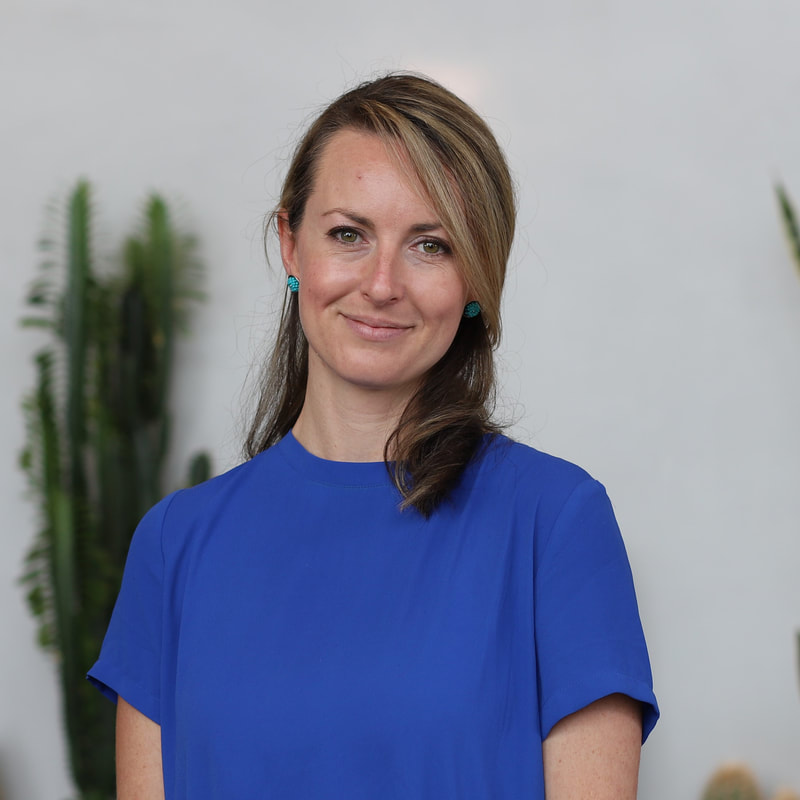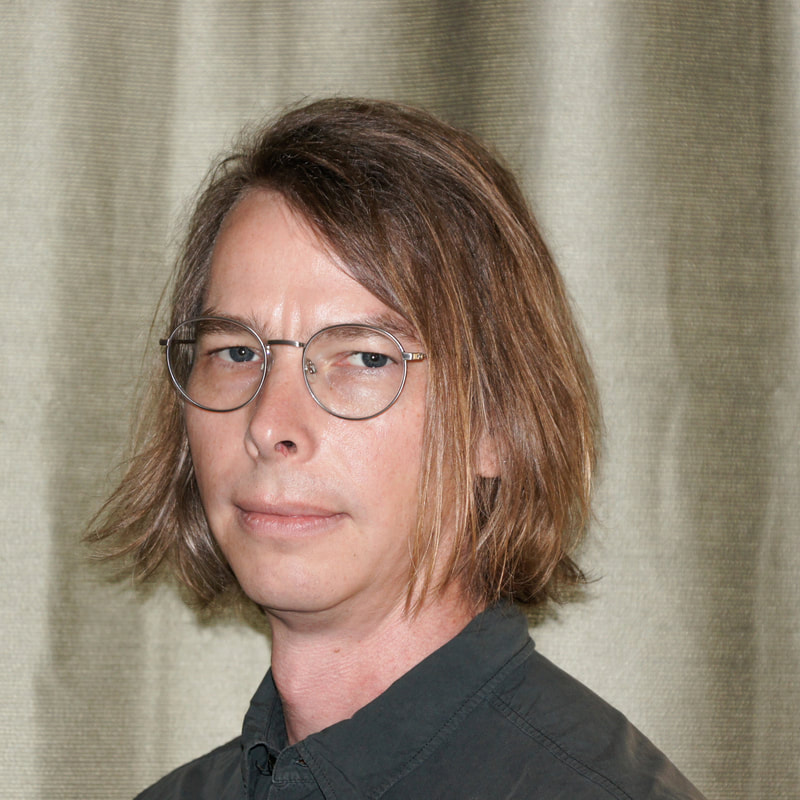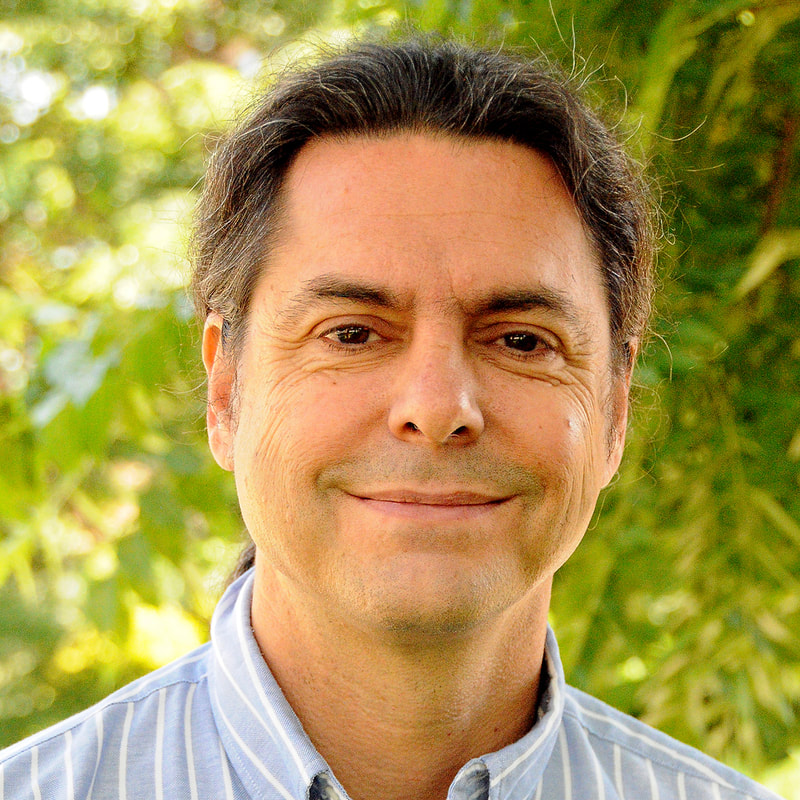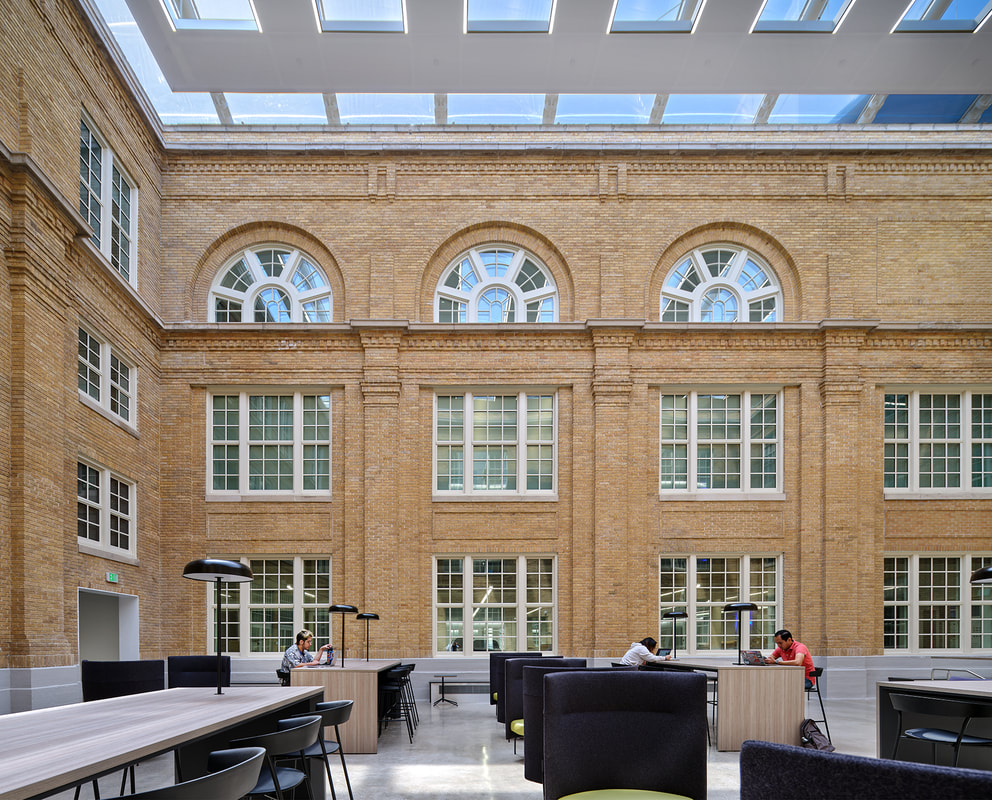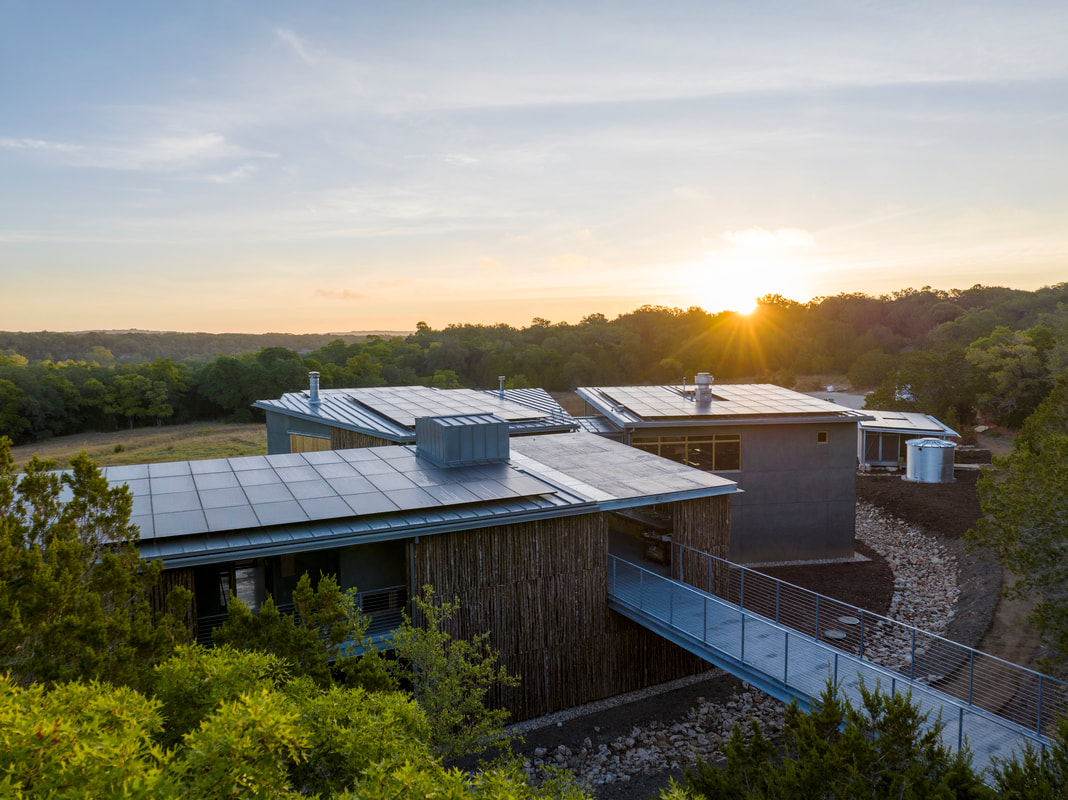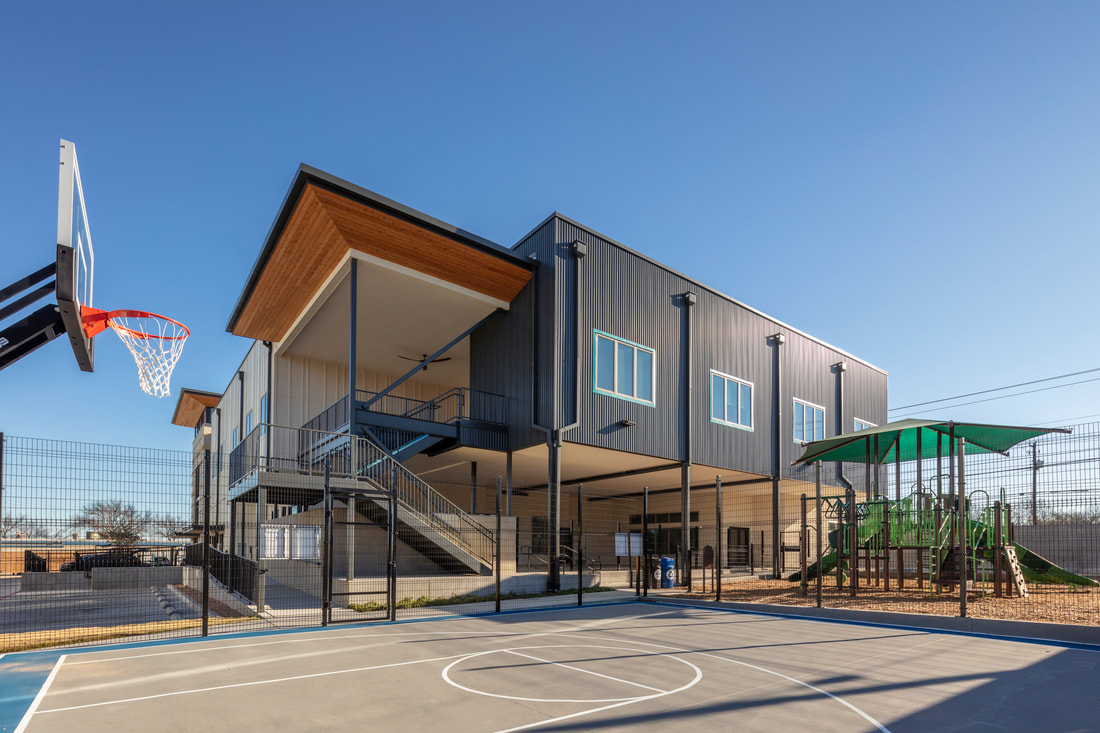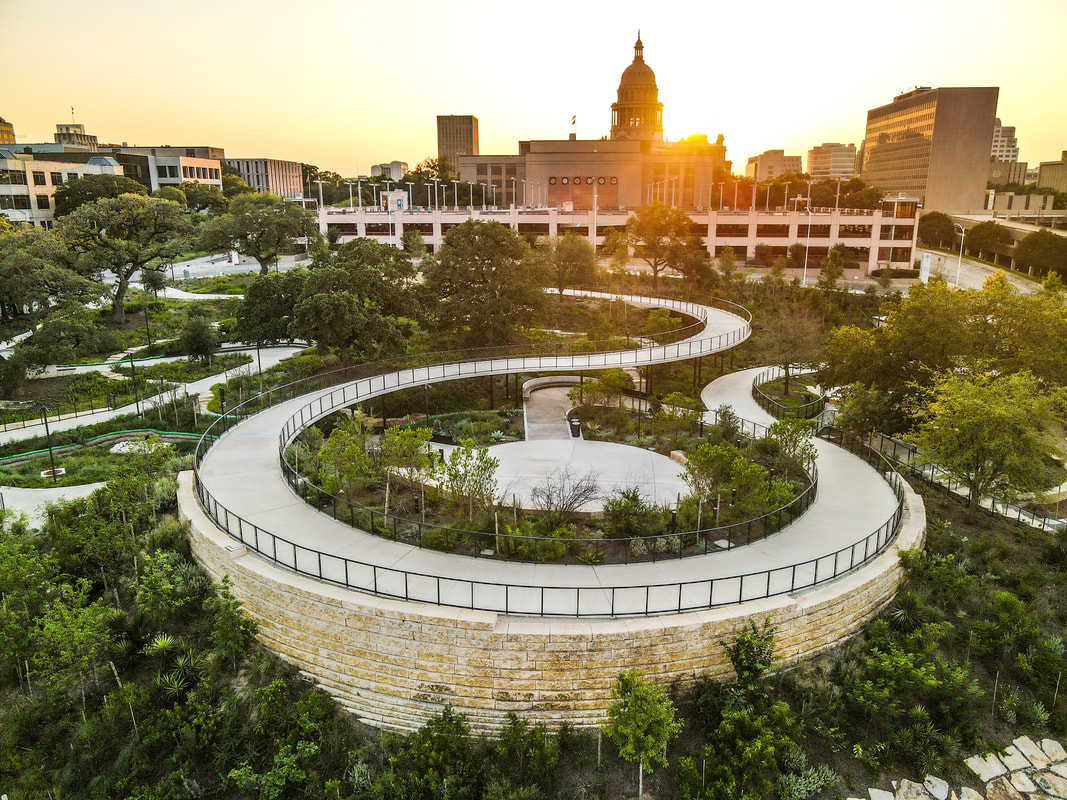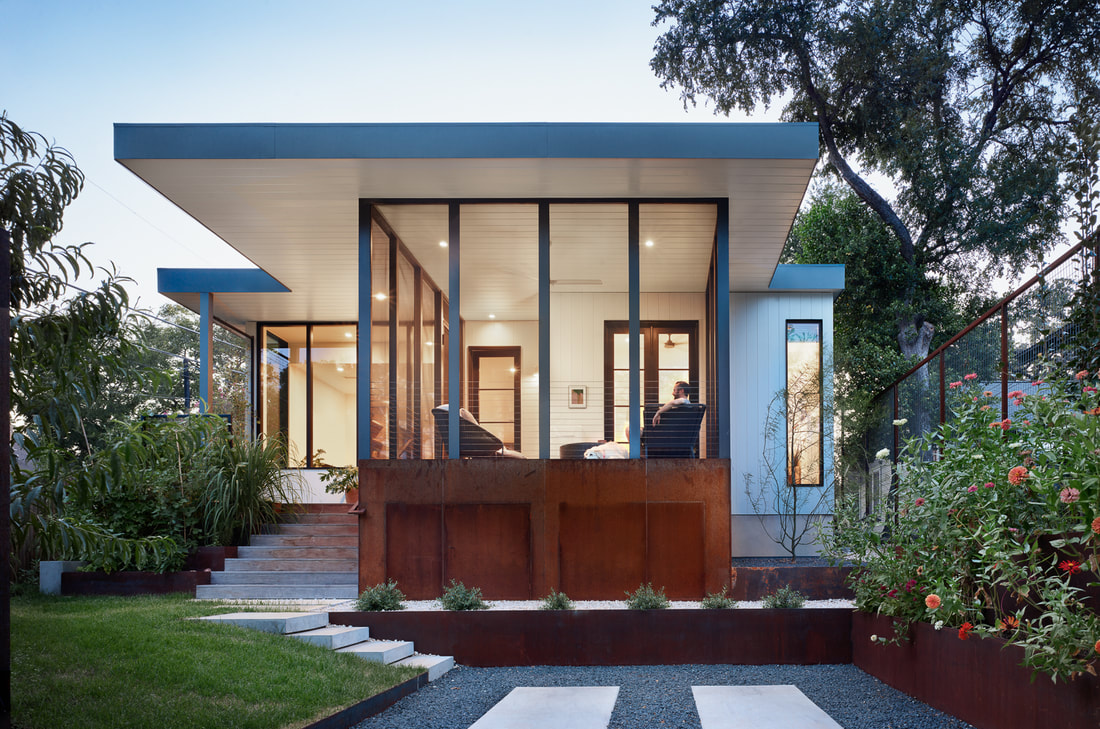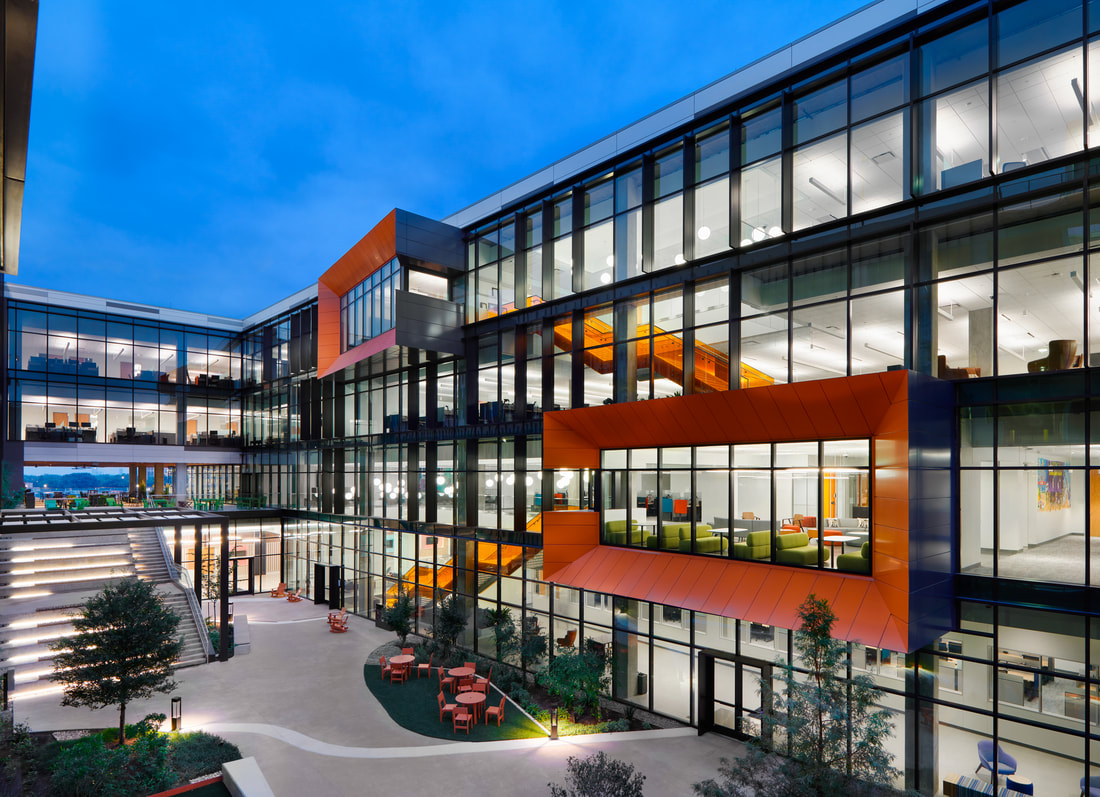Recognizing six exemplary projects.
In its seventh year, the independently organized Austin Green Awards is Austin’s first recognition
program to specifically highlight outstanding accomplishments in the broad arena of sustainable design and
innovation, recognizing forward facing design strategies that respond to rapidly evolving environmental,
social, and health imperatives. Committed to set a high bar for sustainable events, the organizers
implemented procedures to achieve zero waste.
The six Awardees of the 2022 Austin Green Awards were announced at the Austin Green Awards Celebration on October 26th at the Sunset Room. In her introductory remarks, Heidi Kasper, representing Headline Sponsor Austin Energy Green Building, issued a call to action to the audience: “Over the last year, we find so much to celebrate with participation in Austin Energy Green Building ratings at record levels, a new commercial rating system, and the new Austin Energy Headquarters earning a 5-Star AEGB rating and LEED Platinum certification. But we’ve also witnessed 15 weather related climate disaster events totaling more than $15 billion in losses, causing major suffering in the US and around the world. And, we know that it is the most vulnerable among us who are impacted the most. More work needs to be done if we want to realize a future of climate resilient development that supports human health and well-being in a just and equitable way. I know that I’m not alone in my desire for this future, and that it will be through our combined efforts that we can be successful.”
Heidi’s remarks were followed by urban ecologist Katie Coyne’s inspiring keynote. Katie, who serves as
Austin’s Environmental Officer and Assistant Director of Watershed Protection Department, provided a
passionate master class in the core beliefs – eco-feminism, non-binary thinking, abundance mindset,
thinking across scales, inevitability of change – that make possible the magnitude of positive change that
these times require. She closed her remarks with the following:
“The idea that the best urban design, best building design, best design of cities is going to be a
version that allows those spaces to evolve with community needs. If we’re in love with these places
that we’re designing – and we want to be because it helps us drive our passion for this work –
what’s the long-term accountability to these places? How can we think about stewardship and
maintenance and operations in a way that they are part of the way we change the narrative about
accountability to place and the way we love places well. Join me in bringing more love and magic
and passion and fire to this work."
program to specifically highlight outstanding accomplishments in the broad arena of sustainable design and
innovation, recognizing forward facing design strategies that respond to rapidly evolving environmental,
social, and health imperatives. Committed to set a high bar for sustainable events, the organizers
implemented procedures to achieve zero waste.
The six Awardees of the 2022 Austin Green Awards were announced at the Austin Green Awards Celebration on October 26th at the Sunset Room. In her introductory remarks, Heidi Kasper, representing Headline Sponsor Austin Energy Green Building, issued a call to action to the audience: “Over the last year, we find so much to celebrate with participation in Austin Energy Green Building ratings at record levels, a new commercial rating system, and the new Austin Energy Headquarters earning a 5-Star AEGB rating and LEED Platinum certification. But we’ve also witnessed 15 weather related climate disaster events totaling more than $15 billion in losses, causing major suffering in the US and around the world. And, we know that it is the most vulnerable among us who are impacted the most. More work needs to be done if we want to realize a future of climate resilient development that supports human health and well-being in a just and equitable way. I know that I’m not alone in my desire for this future, and that it will be through our combined efforts that we can be successful.”
Heidi’s remarks were followed by urban ecologist Katie Coyne’s inspiring keynote. Katie, who serves as
Austin’s Environmental Officer and Assistant Director of Watershed Protection Department, provided a
passionate master class in the core beliefs – eco-feminism, non-binary thinking, abundance mindset,
thinking across scales, inevitability of change – that make possible the magnitude of positive change that
these times require. She closed her remarks with the following:
“The idea that the best urban design, best building design, best design of cities is going to be a
version that allows those spaces to evolve with community needs. If we’re in love with these places
that we’re designing – and we want to be because it helps us drive our passion for this work –
what’s the long-term accountability to these places? How can we think about stewardship and
maintenance and operations in a way that they are part of the way we change the narrative about
accountability to place and the way we love places well. Join me in bringing more love and magic
and passion and fire to this work."

